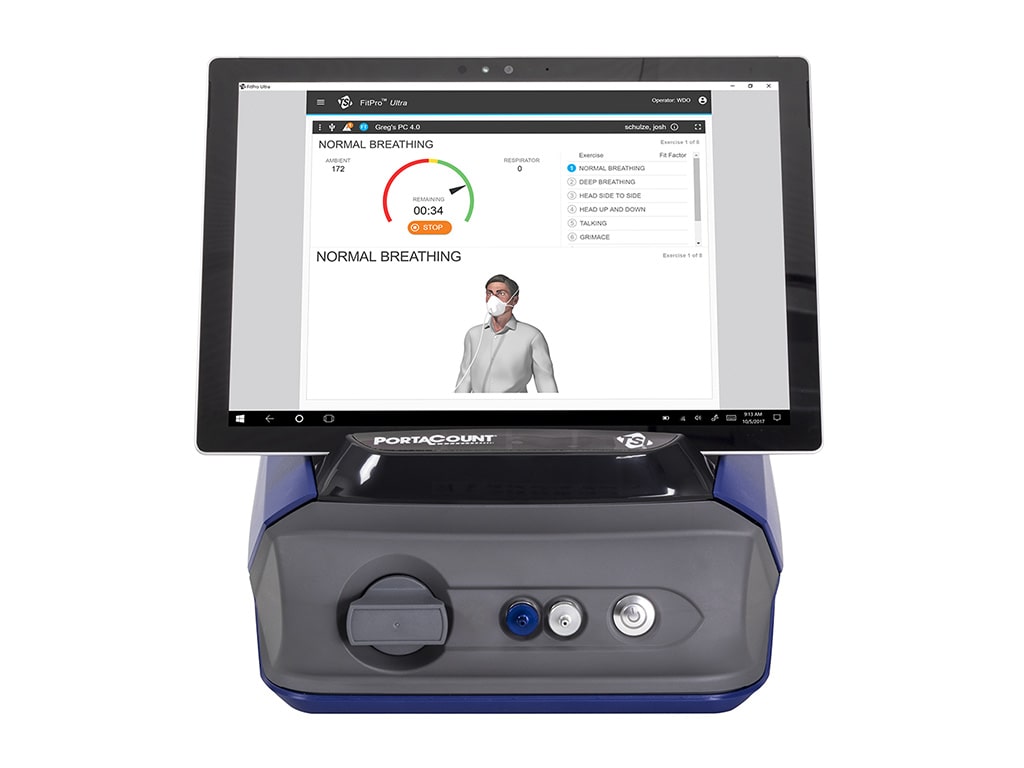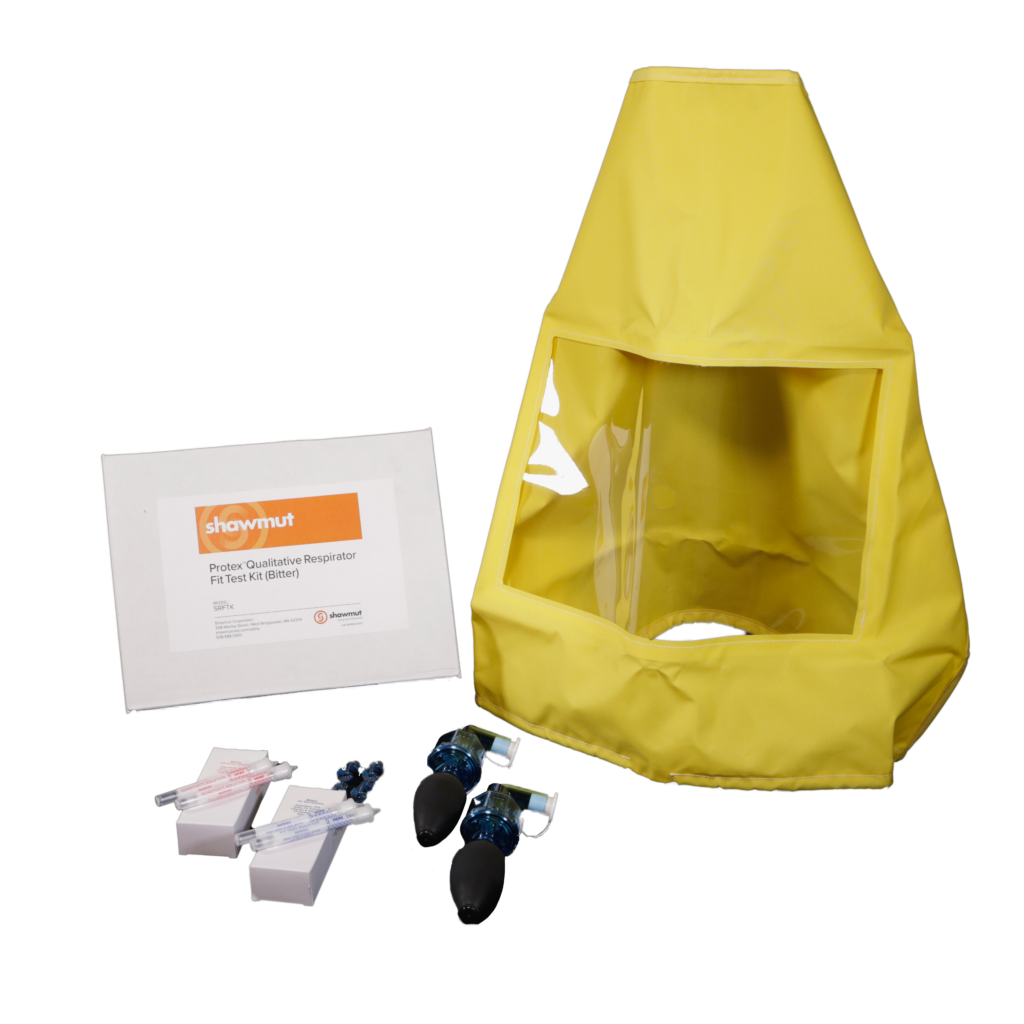Due to the COVID-19 pandemic, it seems like everyone has heard about an N95, although not everyone knows what an N95 is. Those in the know now understand that an N95 is the gold standard for everyday respiratory protection. However, just getting any N95 respirator and wearing it without making sure it fits you properly can be as risky as not wearing one at all.
Many people will refer to an N95 as a mask and think of it as a mask like all the other masks on the market, but it is a fairly technical little device. Officially, an N95 is called a filtering facepiece respirator (FFR), and it meets the National Institute for Occupational Health & Safety (NIOSH) N95 classification for air filtration, removing particulates from the air that are breathed through it and capable of filtering out at least 95% of very small particulates and large drops including dusts, mists, fumes, bacteria, and viruses.
Cloth face masks come nowhere near that level of protection even with built-in filter layers. Surgical and medical procedure masks and KN95s offer a higher level of filtration than cloth masks, but don’t seal well enough around the face to truly offer that higher level of protection. N95 respirators are designed to seal around your face as well as meeting the high filtration level, but an N95’s protection is only as good as its fit and seal.
The Occupational Safety and Health Administration (OSHA) outlines a protocol, as well as general requirements for fit testing, in Standard 1910.134 App. A. As part of the policy, employers must annually fit test employees who are required to wear a respirator to do their job. So, what is a fit test? And how can employers ensure they are properly following the protocols?
What Is an N95 Fit Test, and Why Is It Needed?
A respiratory fit test is used to verify that a selected make or model of N95 respirator properly fits, seals, and protects the employees or users required to wear the respirator for a specific task.
A fit test is not a general test, but a specific test administered for all brands and models of NIOSH-approved respirators to ensure that the wearer identifies the product that works best for them and their facial structure. Just like every individual’s facial structure is different, every make and model of an N95 respirator is shaped differently and therefore they do not fit all individual’s facial structures the same way.
If a worker changes their brand or model of N95 respirator, that worker will have to go through fit testing again with the new respirator. If a worker has any significant changes due to weight loss, weight gain, or a procedure that alters their face shape in any way, they will also need to go through the fit test process again to ensure a proper fit for their safety.
How Do You Conduct an N95 Fit Test?
Employers and wearers have two options to conduct a fit test to determine the proper fit of an N95 respirator: quantitative and qualitative.
Quantitative:
A quantitative fit test uses a computerized precision instrument to measure the amount of leakage an N95 respirator may have when worn on a user’s face and then calculates the results. The result of the quantitative test is a Fit Factor score, which expresses how well that particular N95 fits the face of the test subject.
The measurement device, commonly known as a PortaCount® Respirator Fit Tester (by TSI Incorporated) determines how many airborne particles can break through the respirator’s seal while the wearer is simulating common body motions such as bending and head turns, as outlined in OSHA’s fit testing procedures.

A probe running from the device is securely inserted into the N95 through an air tube, with another probe positioned just outside. These probes measure the air particles. The machine is turned on and the test subject completes the test exercises, which only take a few minutes. Once complete, the PortaCount will score each exercise and also return an overall Fit Factor score.
The range of Fit Factor scores that the PortaCount returns for an N95 is from 1 to 200+, or complete fail. A higher score is better. When NIOSH approves an N95 for the market, it requires a Fit Factor score of 100 or better for a wide range of face sizes. A well-matched N95 for an individual may commonly return a score of 200+ across all exercises. A Fit Factor score at that level assures a great match to the wearer’s face.
Qualitative:
Unlike quantitative fit testing, qualitative testing uses the body’s senses of taste and smell to detect a seal leak. Instead of using a machine to measure leakage, the tester drapes a loose testing hood over an individual wearing an N95. The hood is used to restrict ambient air from diffusing the airborne test solutions that are used to conduct the test. Qualitative fit testing can be conducted using strong sweet solutions, bitter solutions, or an irritant smoke.

When testing with sweet or bitter solutions, the objective is that the person being tested must not taste the solution. For irritant smoke the objective is that the person being tested does not react with an involuntary cough. Qualitative test results are only pass or fail with no calculated scores. If you do not taste the sweet or bitter solutions, or the smoke does not make you cough, you pass the test.
A qualitative fit test using a “bitter” solution (denatonium benzoate) determines the seal of an N95 respirator based on the user’s sense of taste. Once the test subject is under the hood, a sensitivity solution is sprayed into the hood towards the wearer’s face using a nebulizer. The solution will continue to be sprayed towards the wearer. If the test subject is not able to taste the test solution during this process, then the test will be continued using the bitter test solution following the protocol outlined by OSHA.
By design, both quantitative and qualitative fit tests try to detect a break in the face seal of the user’s respirator. If this happens, then the user knows that the respirator will not keep them safe on the job. If the respirator’s seal does not break during the fit test, then the respirator passes, and the wearer should be confident that this particular N95 respirator will protect them on the job if it is worn properly.
An N95 Is Only as Good as It Fits
Fit testing may seem like a nuisance to some, and because it can take time and expense to administer, companies may struggle to adhere to the annual OSHA requirements. But if your N95 respirator doesn’t fit properly, it will not protect you or do the job it is intended to do.
Fit testing is not just an OSHA requirement for safer workplaces; it’s a matter of an employee’s livelihood. If you or your employees need to wear respiratory protection on the job to protect from dust, harmful chemicals, fumes, or gasses, you better make sure that it works. And the only way to do that is with a fit test.
For more information and details about qualitative testing, check out our Fit Test Kit here.




